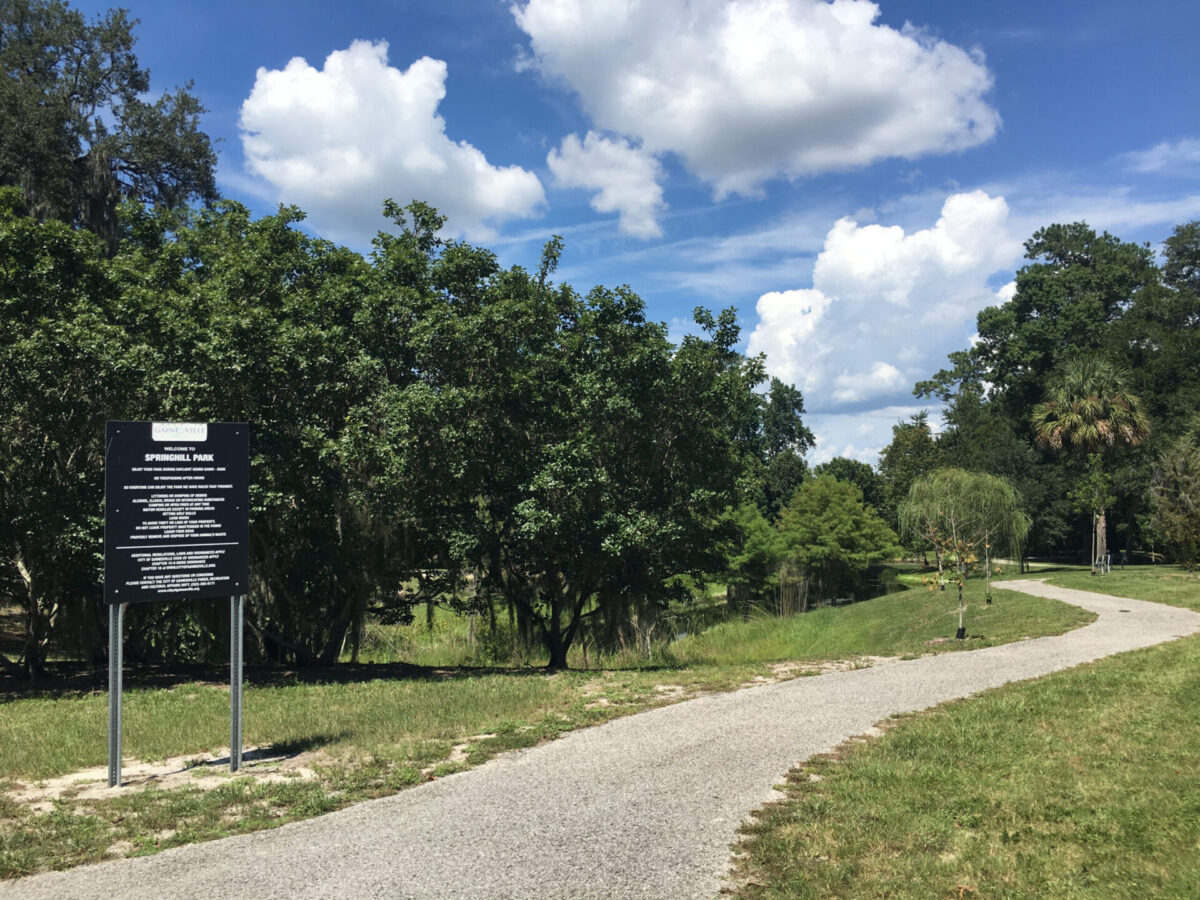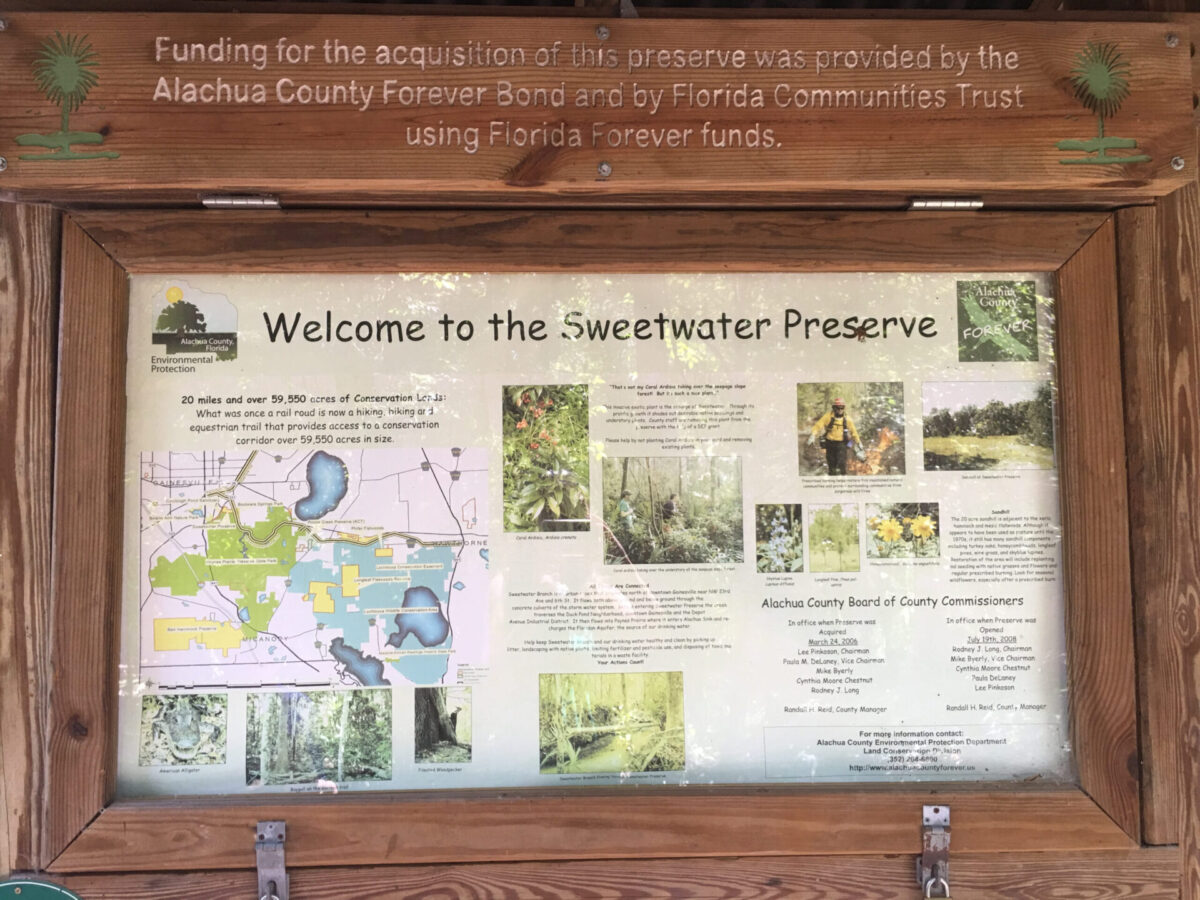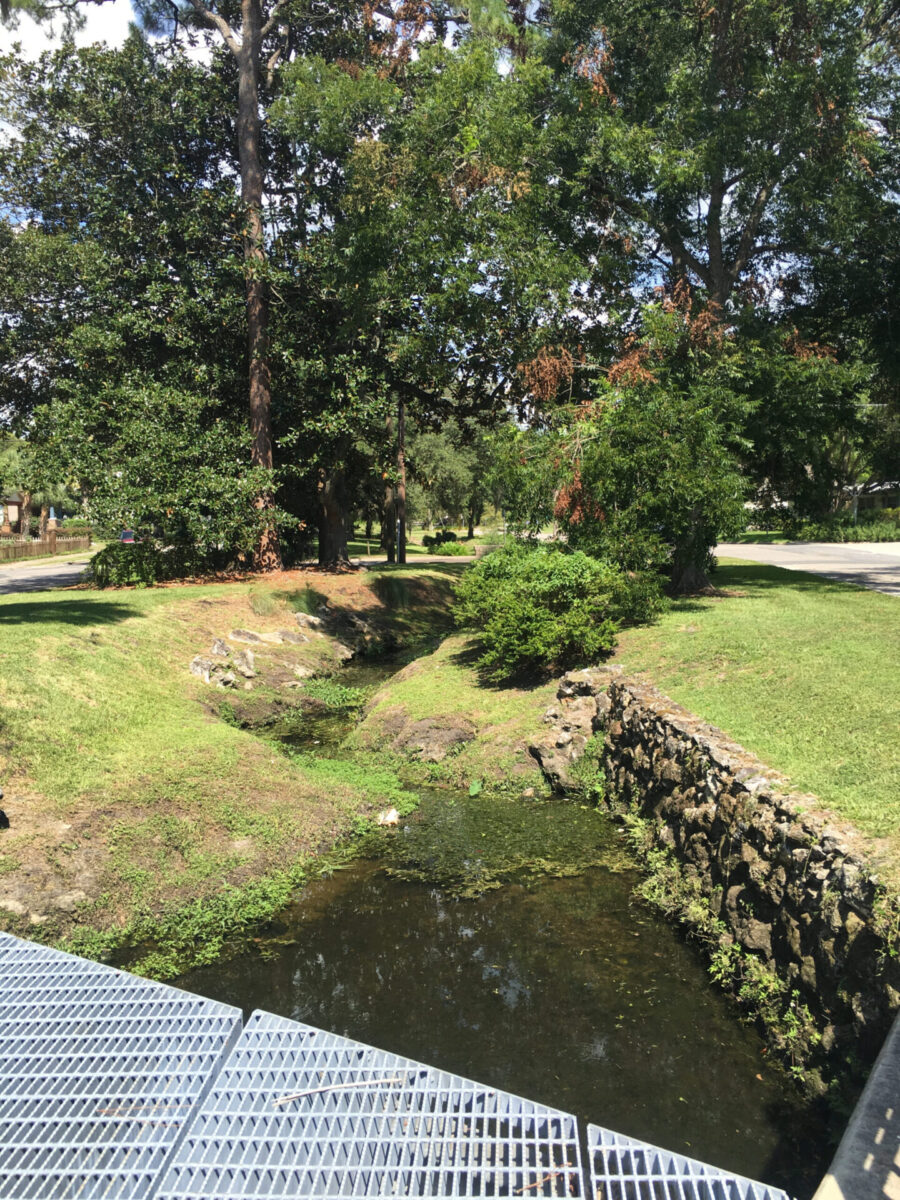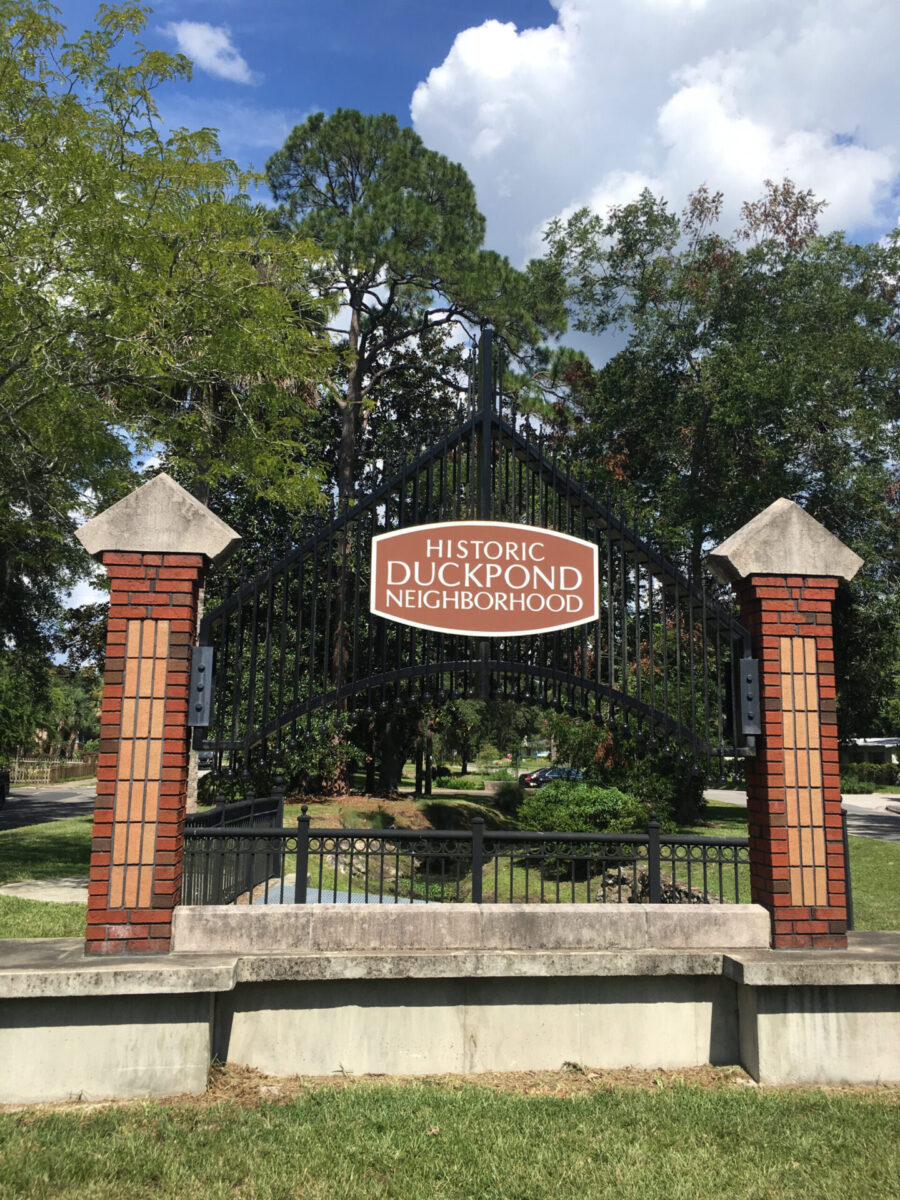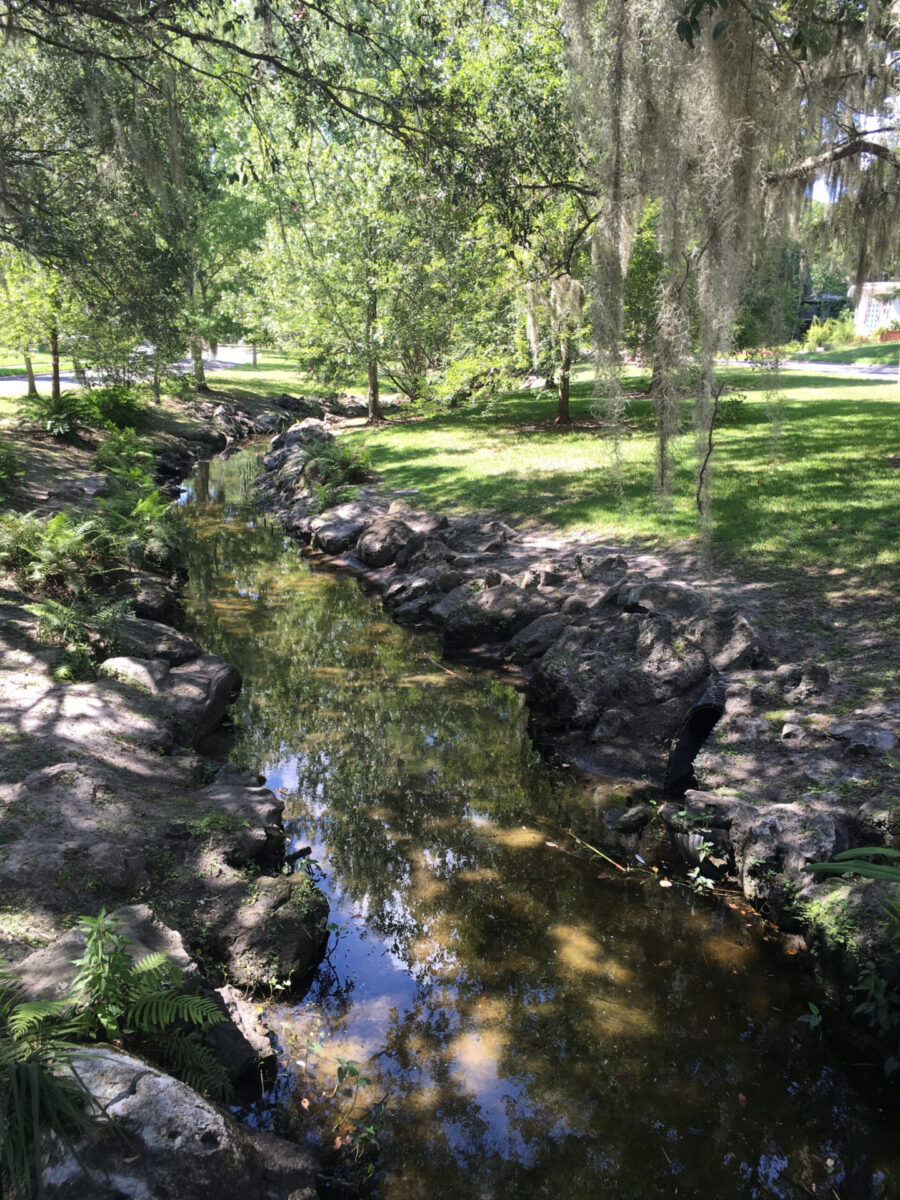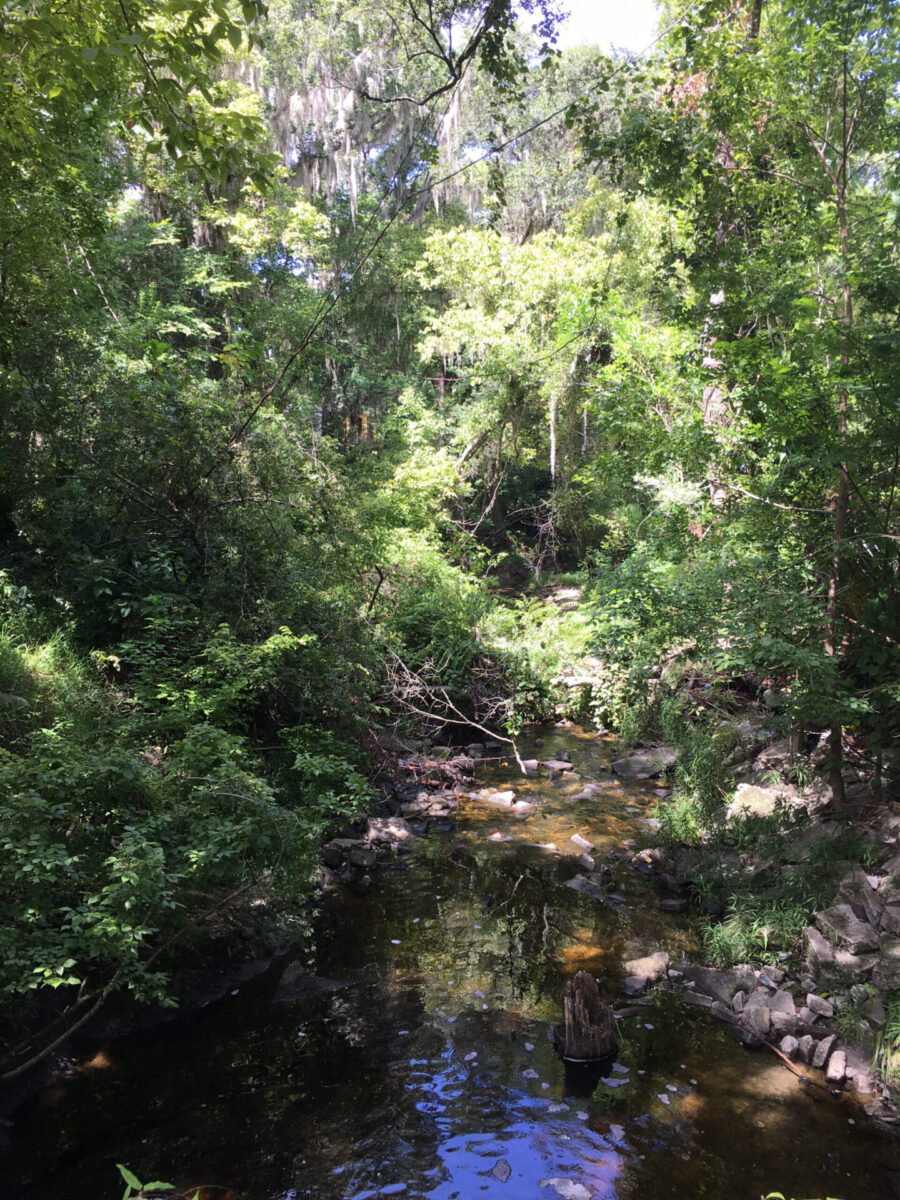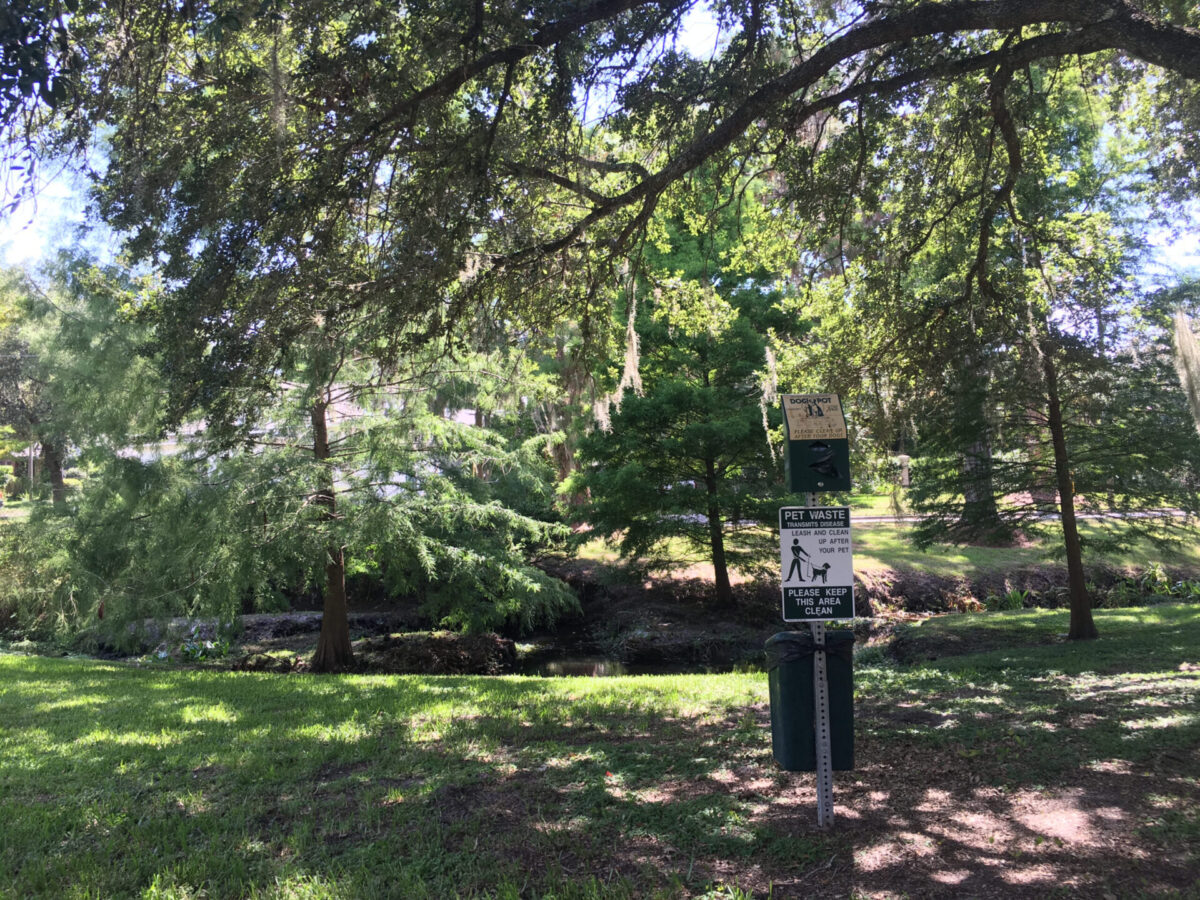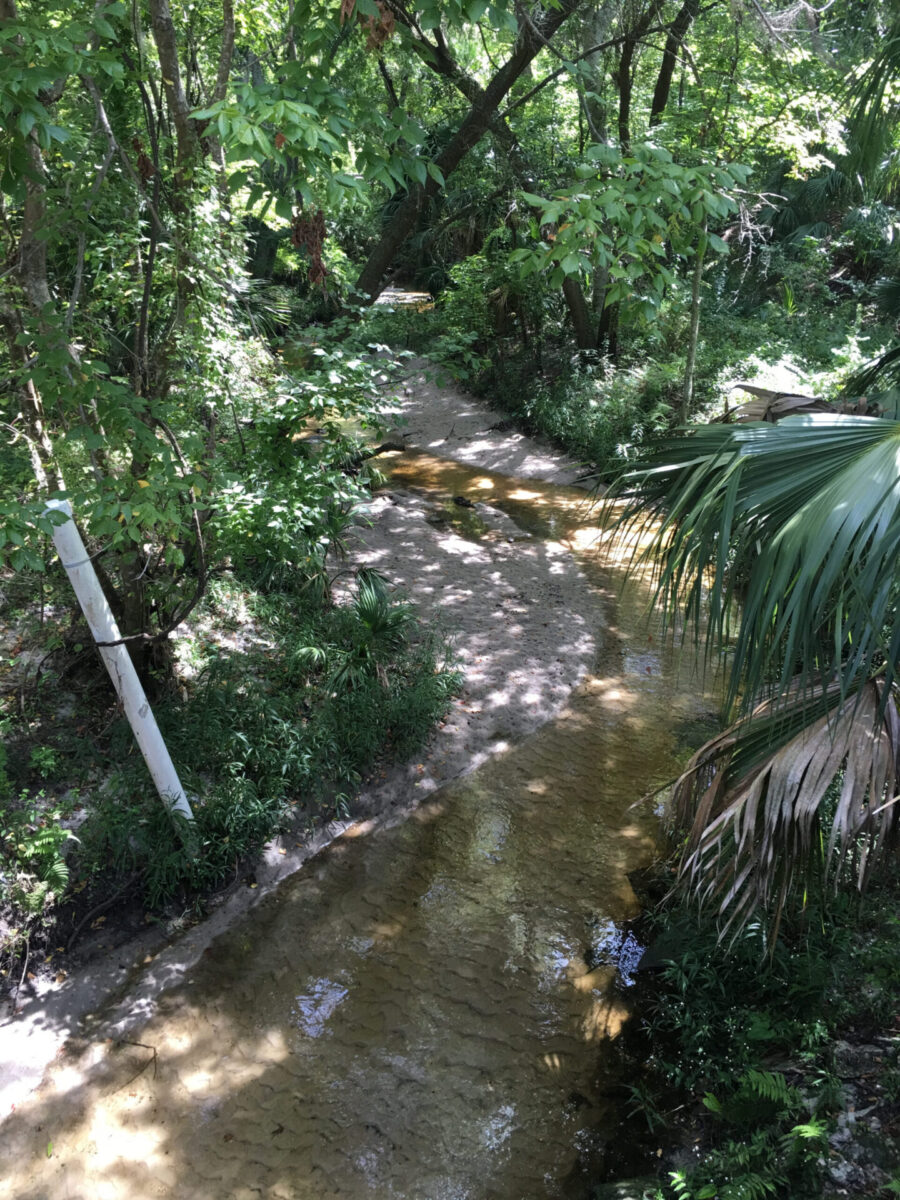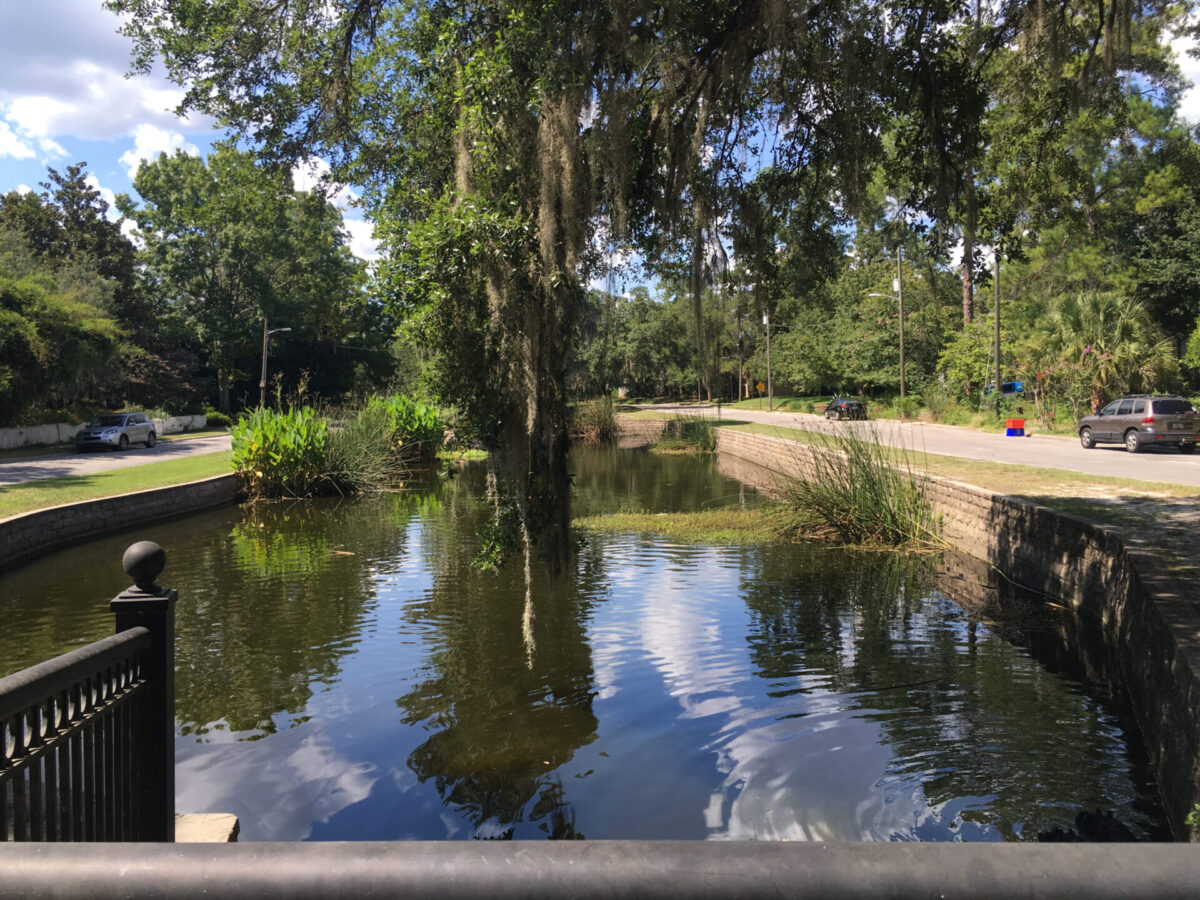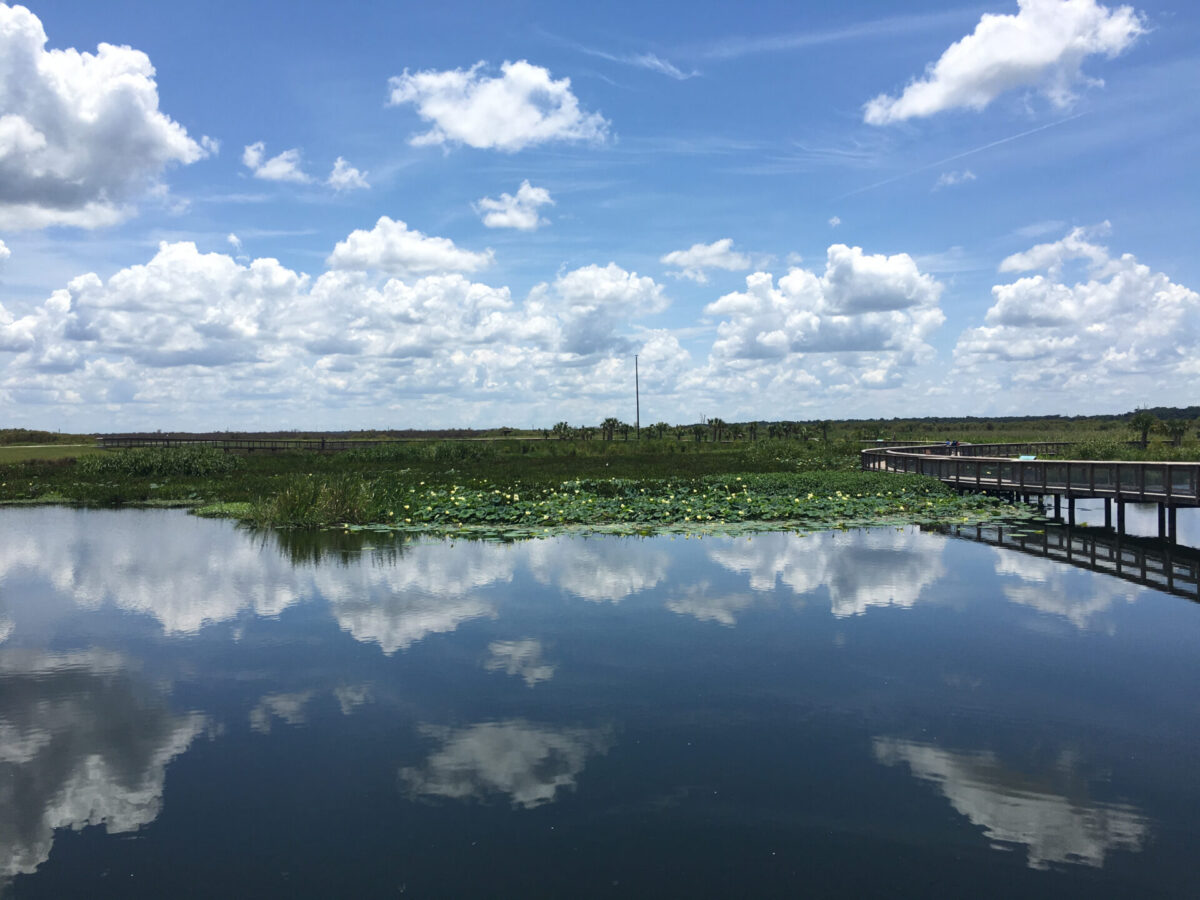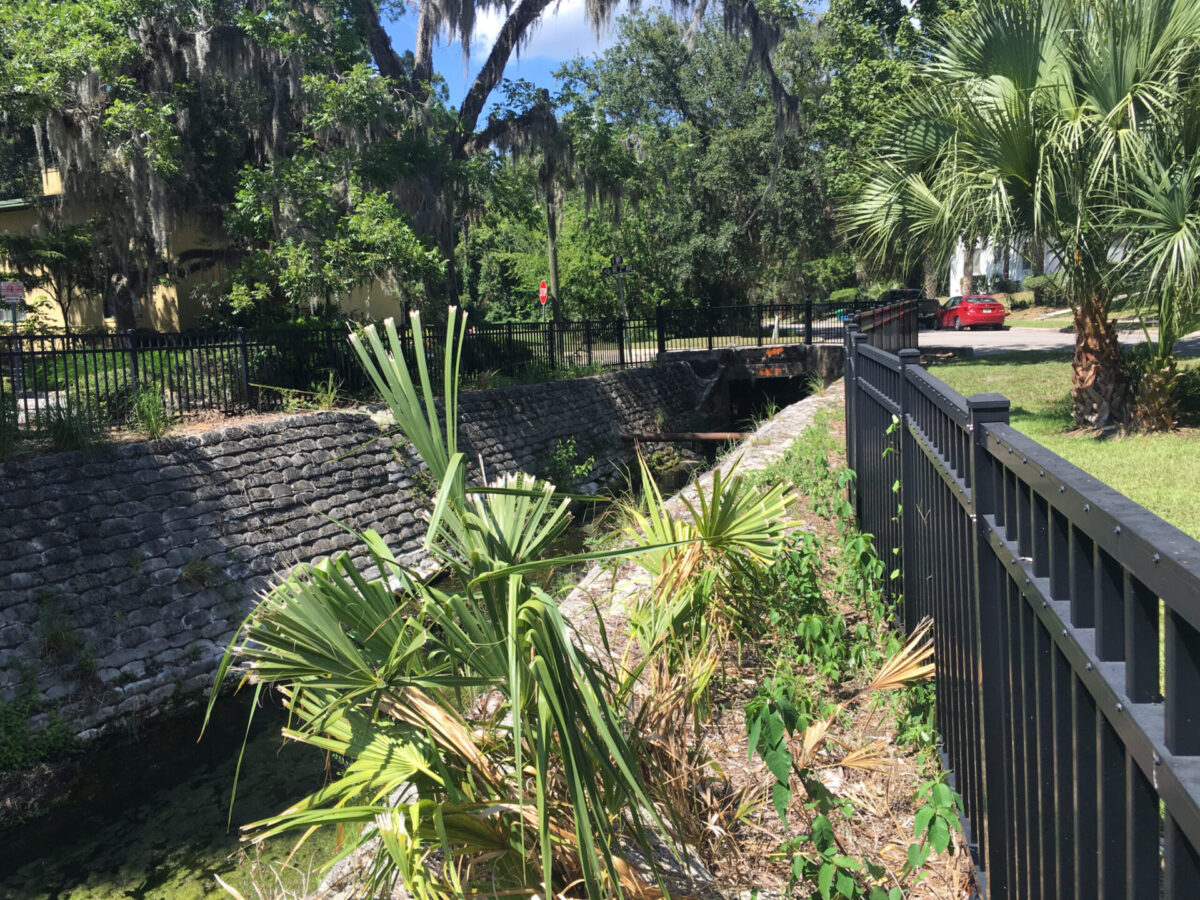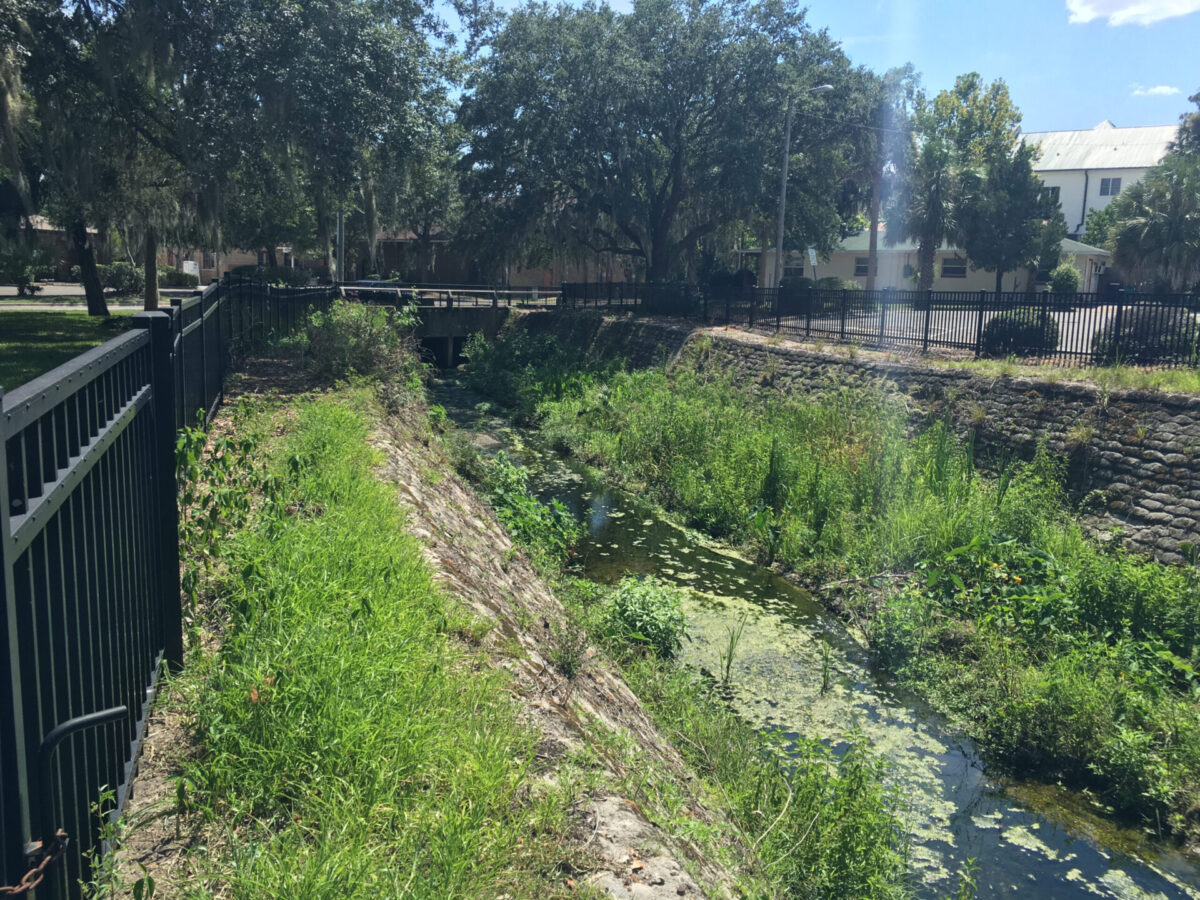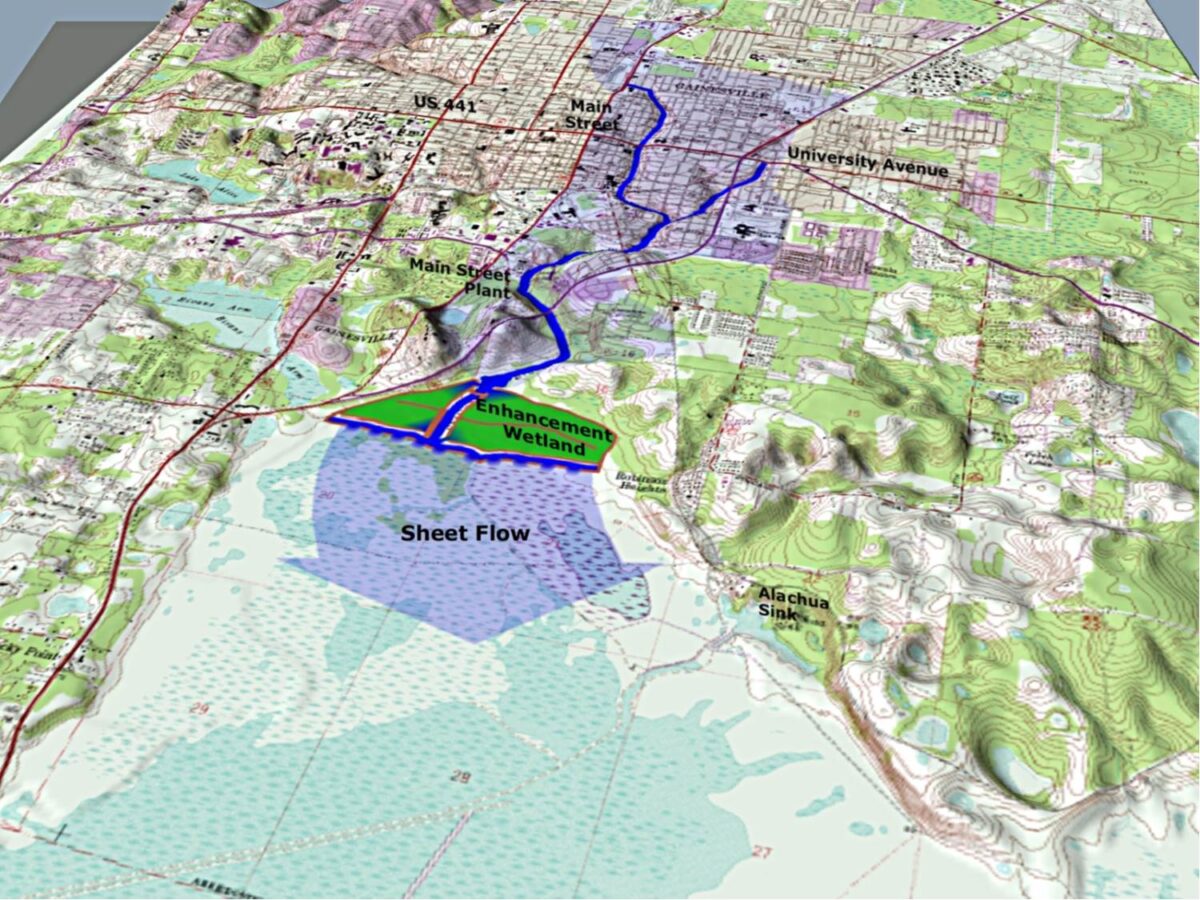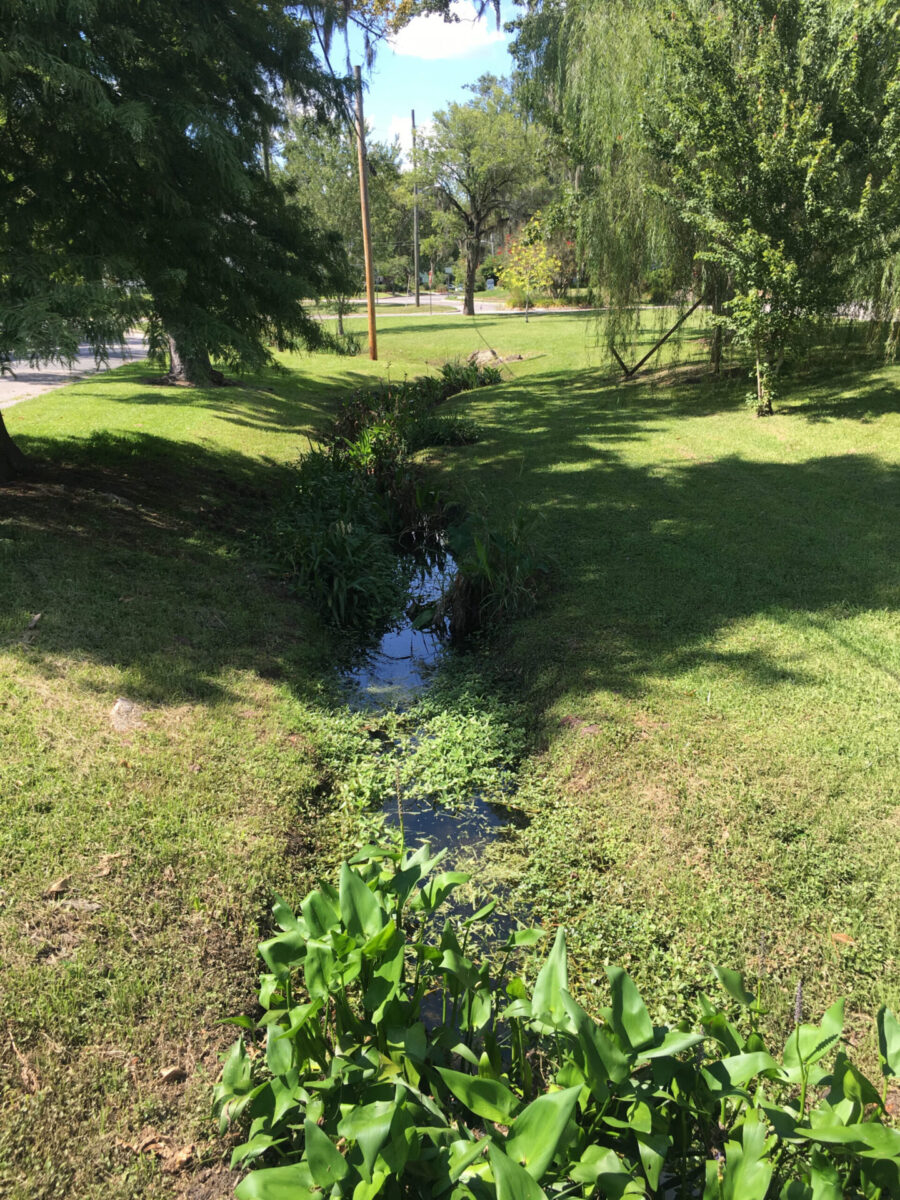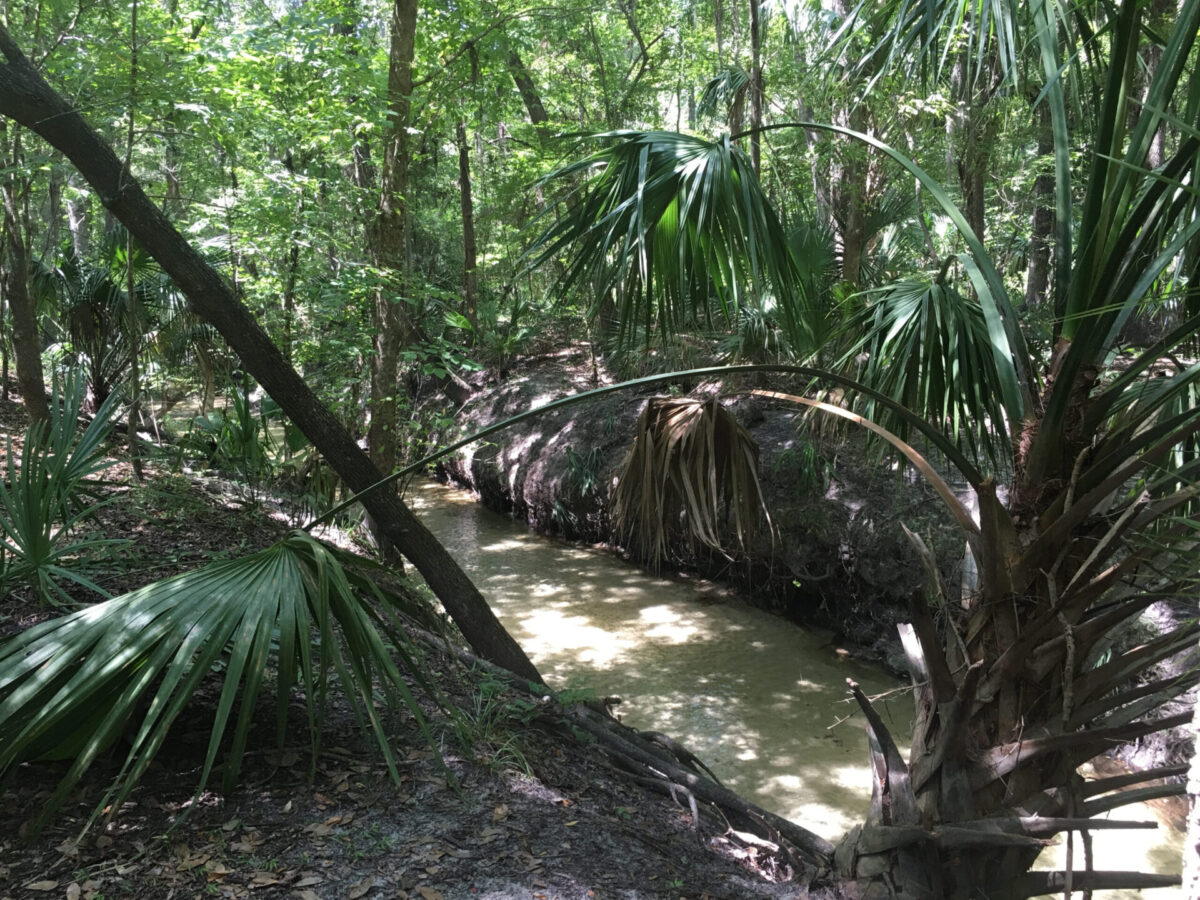Sweetwater Branch Creek
Back
to
Map
Overview
Flowing through the heart of Gainesville, Sweetwater Branch Creek was once a 6-mile-long, spring-fed stream. Over the past century, Sweetwater Branch has changed in many places to prevent flooding. Presently, the “beginning” of the creek comes out of a large pipe at the head of the Duck Pond Neighborhood. Flowing southward through downtown, Sweetwater Branch is joined by Rosewood Branch near SE 10th Avenue. The creek flows through three historic landfills and receives reclaimed water from the Main Street Wastewater Treatment Plant before passing through several natural areas. Ultimately, dropping around 125 feet during its journey, the creek ends in Paynes Prairie, where the waters flow into the Floridan aquifer via Alachua Sink.
A large treatment wetland built in 2015 will improve the quality of water entering the Floridan aquifer by restoring the creek’s natural flow into Paynes Prairie. In addition, several sediment and trash traps have been installed along the upper parts of the creek to remove harmful litter and debris.
Water Quality
Both fertilizer and soils contribute to the creek’s being listed as impaired for total phosphorus by the Florida Department of Environmental Protection. Rainwater washes fertilizers from lawns, and soils from the creek banks into the water, which increases phosphorus levels and can harm creek wildlife and habitat. Residents can help by fertilizing only when necessary and never before a heavy rain.
Sweetwater Branch is also listed as impaired for fecal coliform because higher than normal levels of fecal matter have been found in water samples. Possible sources include both domestic and wild animal waste, leakage from sanitary sewer lines, faulty private sewer connections and failing septic tanks. Routine inspections of septic tanks every three years can ensure they are working properly and not leaking into the environment. These inspections are offered by members of the Gainesville Clean Water Partnership. Residents can also help by picking up and disposing of their pet’s waste in a trash can.
Biological surveys of Sweetwater Branch in warmer months of 2001 and 2009 indicate that the stream population of benthic macroinvertebrates was not healthy, but a survey in winter of 2012 shows a healthy population. Warm water temperatures of summer are likely affecting the populations. For more information on water quality, download the Sweetwater Branch Fact Sheet.
Plan a Visit
Studies show that interacting with nature improves our health, behavior and attitude; and for children their mental and physical development. So go out, look, listen and create your own experience! Sweetwater Park, 415 SE 2nd Ave., located behind Matheson Museum offers a botanical garden and playground. Depot Park (open in 2015), 200 SE Depot Avenue, offers walking trails and children’s areas in the heart of the city. For the wilder at heart, the 125-acre Sweetwater Preserve, 95 SE Williston Road, provides a buffer and wildlife corridor on the northern rim of Paynes Prairie. Paynes Prairie Preserve State Park’s La Chua Trail’s scenic 3-mile hike includes free-range wildlife (watch out for alligators!), a boardwalk, and a view straight into the Floridan aquifer. Visit Sweetwater Wetlands Park to see how the creek’s natural flow is being restored to improve water quality. The area includes 3.5 miles of trails among the ponds and wetlands on about 250 acres.
Did you visit Sweetwater Branch Creek? Share your photos with us on Facebook or Twitter.
Fun Facts
• Before development of the Gainesville Mall, the beginning of Sweetwater Branch Creek was located near what is now the Main Street Publix.
• It’s hard to imagine, but much of the area that is inhabited today by auto shops, gas stations and other paved areas and buildings was once the wetlands forming the origin of this creek. Now, nearly two-thirds of the creek’s urban watershed is covered with buildings and pavement.
• Sweetwater Branch empties into the Floridan aquifer through Alachua Sink, called “the drain of the prairie.” The Floridan provides drinking water to 80 percent of Florida’s residents. During periods of drought, flow into the prairie is sustained by Sweetwater Branch’s consistent flow.
• The Duck Pond was created for purposes of water collection in 1927. It was originally named Vidal’s Lake after its designer James H. Vidal.
• Total Nitrogen levels in the creek were more than cut in half between 2008 and 2011.
Wildlife
Most of the native songbirds of the Gainesville area, along with woodpeckers, red-tailed hawks, osprey, and barred owls can be spotted. Alligators, turkeys, and aquatic turtles are quite common as the stream approaches Paynes Prairie Preserve. Fish species such as the mosquitofish are abundant in most of the creek.
Macroinvertebrates (animals like insect larvae and even crustaceans that have no back bone and canbe seen by the naked eye) are important food sources for adult insects, fish, frogs, and birds. Improving stormwater flows in lower sections of Sweetwater Branch has increased macroinvertebrate diversity from 2001 to 2009.
Along the lower reaches of Sweetwater Branch, native box elder, water oak, pignut hickory, blue beech, sugarberry, and sweetgum trees abound. Beneath the trees, species like elderberry grow in places, but are also often pushed out by invasive exotic species like Mexican petunia, wild taro, and air potato. In the upper reaches of Sweetwater Branch aquatic vegetation such as exotic Hydrilla and native Sagittarria species are present.
Click the Image to See the Gallery!


